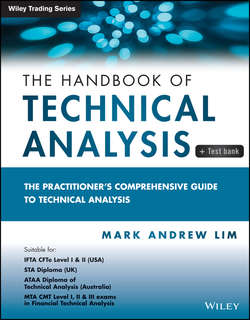Читать книгу The Handbook of Technical Analysis + Test Bank - Lim Mark Andrew - Страница 23
На сайте Литреса книга снята с продажи.
CHAPTER 2
Introduction to Dow Theory
2.1 ORIGINS AND PROPONENTS OF DOW THEORY
ОглавлениеCharles H. Dow is credited for much of the early work that led to what is known today as Dow Theory. Dow’s successor, William P. Hamilton, carried on developing and organizing much of Dow’s original early writings, which included the Wall Street Journal editorials that were published around the beginning of the twentieth century. Hamilton’s work culminated in his book The Stock Market Barometer. A close acquaintance of Dow’s, S. A. Nelson, published a book about Dow’s work entitled The ABC of Stock Speculation and was the first person to refer to Dow’s concepts and ideas as the “Dow Theory.”
Robert Rhea, a student of Hamilton, was later responsible for much of the categorizing, refining, and formal codification of Dow’s basic premises, which were laid out in Rhea’s book The Dow Theory. It was Robert Rhea’s work that really developed Dow’s Theory and laid the basic foundation with three important assumptions. The first is that the primary trend is not susceptible to manipulation, although there is a possibility that it could occur over the shorter term. Rhea’s second assumption was that the averages discounted everything and that price is a reflection of all information. Finally Rhea proposed that Dow Theory itself is not perfect and that investing according to its principles will not guarantee profitability. At most, it should be regarded as a set of guidelines for investing.
Dow published, in 1884, a stock market average of 11 stocks that he later developed into a 12-stock Industrial Index and a 20-stock Railroad Average. Dow wanted to create an index of stocks to better reflect the general action of the markets instead of trying to gauge market behavior via individual stock action, which was at the time fairly erratic and open to manipulation. The index was meant to average out or smooth these erratic price movements. The action of the averages was meant to act as a barometer of the current market environment.
Since then, the 12-stock Industrial Index has gradually evolved into 30 stocks and is known today as the Dow Jones Industrial Average. The Railroad Average is known as the Dow Jones Transportation Average.
